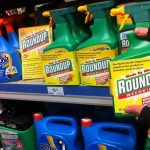Women in Indiana’s “corn belt” had shorter pregnancies if they were regularly exposed to glyphosate, a new peer-reviewed study has found
“Glyphosate is the most heavily used herbicide worldwide but the extent of exposure in human pregnancy remains unknown,” Indiana University researchers write in the journal Environmental Health.
The chemical is the active ingredient in Monsanto’s Roundup spray, which accompanies the company’s genetically modified corn and soybean seeds so that farmers can freely kill weeds without destroying their seeds.
Glyphosate-intensive farming has taken over industrial agriculture in the United States, resulting in 300 million pounds of the spray applied annually. Some researchers, as well as public health advocates and environmental groups, have charged that little is known about the potential health effects of exposure to a spray prevalent in the environment and the food supply.
To study the effect of glyphosate on pregnancy, researchers with the Indiana University Fairbanks School of Public Health took urine samples from 71 pregnant women who live in central Indiana, which produces much of the world’s corn.
https://www.consumeraffairs.com/news/ingredient-in-monsantos-roundup-spray-linked-to-shorter-pregnancies-032318.html






